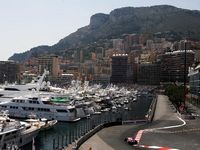 Round six of the 2008 FIA Formula One World Championship takes the F1 circus to Monaco for the most prestigious motor race in the world. The annual dash through the Principality s tortuous streets is a unique test of man and machine performed in front of the glamorous backdrop of the Monaco harbour.
Round six of the 2008 FIA Formula One World Championship takes the F1 circus to Monaco for the most prestigious motor race in the world. The annual dash through the Principality s tortuous streets is a unique test of man and machine performed in front of the glamorous backdrop of the Monaco harbour.
The 3.340km (2.075mile) street track requires the cars to run with maximum aerodynamic downforce and the proximity of the barriers makes the 78-lap race one of the most mentally demanding for the drivers, despite the average lap speed of 160kph (100mph) being the one of the slowest of the year.
Such is the Monaco Grand Prix s profile and history that it retains many of the traditions from the inaugural race staged in 1929. The most idiosyncratic of these customs is the expansion of the race weekend to four days, with the on-track action starting a day earlier than usual, on Thursday.
Experience the Monaco Grand Prix first hand, enter our ticket store to buy Formula One Practice, Qualifying and Race tickets and passes ( VIP Paddock Club access now available).
LAP OF THE TRACK with Alex Wurz
“Driving a Formula One car around Monaco is a crazy experience because it s so narrow, but it s also a fantastic challenge. You have to decide everything on the corner entries and there s no space for error if you get it wrong. As a result, you need to build up your rhythm because you need to learn how much you can slide the car.
“To take you around the lap: there s a surprising amount of grip away from the start line, given that it s a temporary racetrack. There s then a very short run down to Sainte Devote, where the trick is not to out-brake yourself and to let the car roll in, touching the inside kerb a little bit. You then accelerate up the hill towards the Casino. The car gets very light over the hill at Massanet and just as it lands, you start to brake. To be quick through here, you don t want to destabilise the car by being too harsh with the brakes; you want to let it glide in, which takes a lot of confidence.
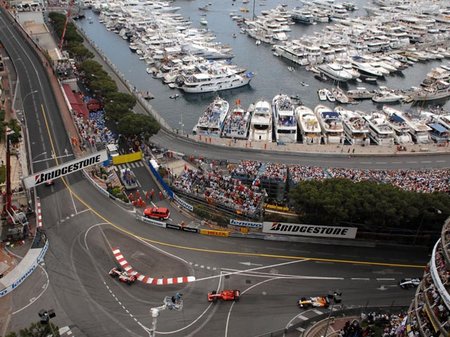
“The right-hander through the Casino is third gear and it will be tough getting back on the power without traction control. Mirabeau comes next and the track drops away in the braking area, so you have to be patient.
The front end goes very light initially, then when it grips, you can floor the throttle. The Fairmont Hairpin is very tight, but you can get through it with one turn of the wheel. As you accelerate out, you quickly select second gear to limit wheelspin before turning into the next right-hander. This leads into Portier, from where it s very important to make a good exit because you carry that speed through the tunnel.
“The tunnel isn t that challenging with the V8 engines, but it s still very fast. The cars are doing about 300kph at the exit, which feels pretty quick, and you only brake for the harbour chicane at the 100-metre board. The braking area is downhill and a bit bumpy, so it s easy to lock up a wheel. Next is the left-hander at Tabac, which is a pretty amazing corner. You can enter faster than you think and the apex is a barrier, so you have to be inch-perfect with your line to ensure you don t clip it. There s a lot of grip at the exit, so you can enter very fast and wait for the front tyres to grip.
“There is only a short straight before the Swimming Pool, which is taken almost flat-out. The car bounces over the kerbs and you get a bit of oversteer on entry, which makes it pretty exhilarating. The next chicane is fairly routine, but there are still walls to hit if you get it wrong.
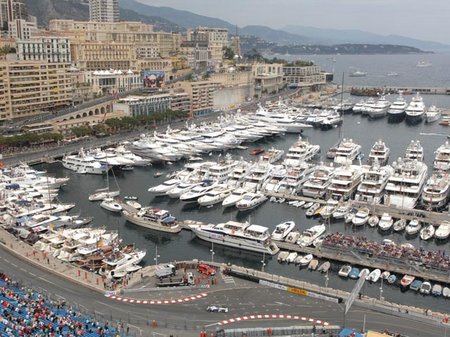
Then you re into Rascasse, which isn t as extreme as it used to be, and then you have to be careful not to enter the last corner too quickly because you need a clean exit from which to accelerate onto the start-finish straight.”
Q & A with Heikki Kovalainen
Can you outline why qualifying is so key at Monaco?
“Overtaking on the street circuit at Monaco is virtually impossible even if the other car is much slower. That means qualifying is even more important than any of the other tracks, you have to be near the front of the grid, as otherwise you can t run your own pace. You end up stuck behind the slower cars and that costs you huge amounts of time. During the qualifying session, the priority is track position, to allow you to do you own lap and avoid other cars, but it is very difficult. Everybody tries to slow down at the last hairpin to get a gap to the next car, so when you are on your flying lap one lap later you arrive wanting to complete your fastest time and everyone is waiting there again to pull their gap out. So timing is what we are focused on, and luck! Set-up, balance and getting the most out of the car is of course very important but timing is crucial.â€
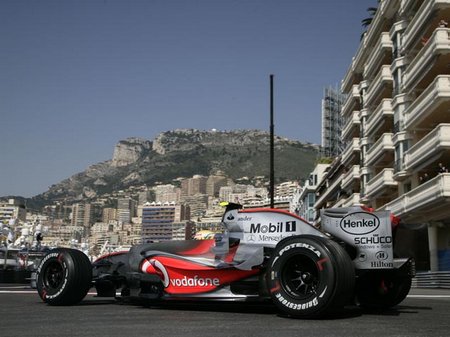
Do you enjoy racing at Monaco, what is it about the track that you like?
“I always enjoy driving at Monaco because it is a very challenging circuit. Some people think because it is not as fast it must be easier, but it is not very forgiving and you have to focus every single moment and be the maximum on each lap, you can t relax anywhere. It also has unique characteristics, such as the sound is very different. It is louder even in the car because of the buildings surrounding the track. All the drivers like it because it is a challenge, and we like our challenges! It is a very special race and it is very difficult to win, that is why everybody is very motivated to do just that.â€
Can it also be a frustrating circuit, and is there anywhere you can overtake?
“It can be very frustrating, the biggest reason is being stuck behind the slower cars, but the challenges far outweigh that. It is possible to overtake; probably the easiest place is the exit of the tunnel down into the chicane. But even that is reasonably easy to defend, you just go to the inside line. You really need the guy in front to make a mistake, which when you know you have a faster car can be annoying. Simple answer is to make sure you qualify near the front!â€
What is key to being quick at Monaco?
“You have to be brave. You have to attack the brakes and the fast corners, the whole time you must be very aggressive and drive close to the walls. It is not so much about the set-up, balance and so on, it is all about attacking and being bold.â€
MONACO – THE TECHNICAL CHALLENGE
From a technical point of view, Monaco is not as much of an enigma as many people think. The track has been re-surfaced several times in recent years, which means the asphalt is not dissimilar to many permanent racetracks around the world, and from a set-up point of view, it is simply at one end of the aerodynamic and mechanical spectrum.
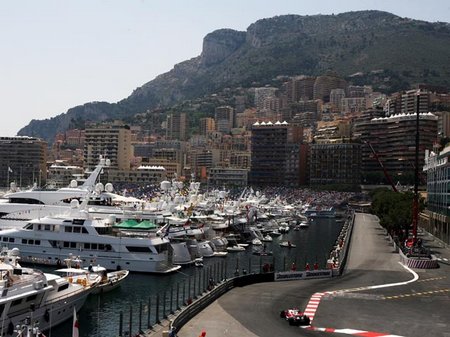
The cars run with maximum aerodynamic downforce throughout the weekend, which leaves the engineers and drivers to focus on maximising the mechanical grip generated by the cars. It is generally best not to change the car s set-up too much during first practice on Thursday as the circuit only becomes representative in session two, once the surface has started to collect rubber.
With overtaking almost impossible at Monaco, gaining a good grid position is vital. For the engineers, finding their drivers a clear piece of track during qualifying, especially during Q1 when all 20 cars will be out, is as important as improving the car s set-up.
Sources: Honda F1, McLaren-Mercedes






